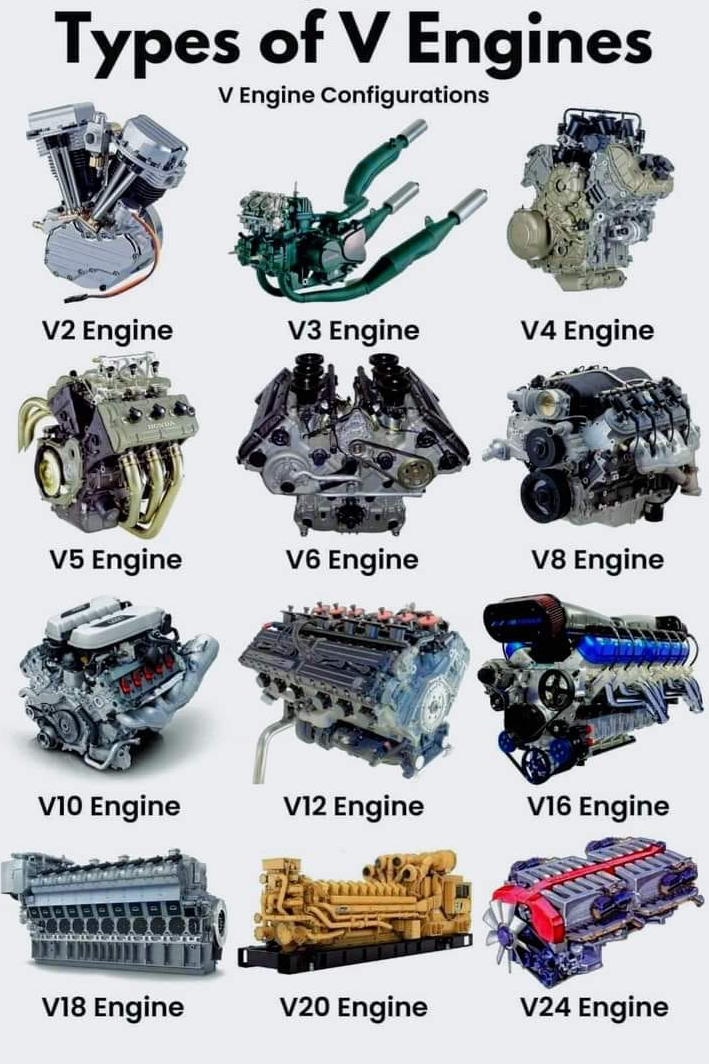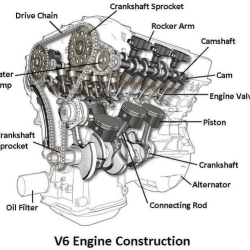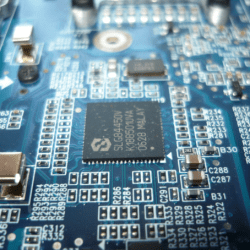What is a V Engine? A Detailed Guide
A V engine is an internal combustion engine where the cylinders are arranged in two separate banks at an angle, forming a “V” shape. This configuration is common in engines that require more power and smoother performance without sacrificing compactness. V engines are used widely in cars, motorcycles, and industrial machines. The angle between the cylinder banks can vary, typically ranging between 60 and 90 degrees, depending on the design and desired characteristics.
Overview of V Engine Design
The key feature of a V engine is its V-shaped cylinder arrangement. This design allows for a more compact engine compared to inline or flat engine configurations, which are often longer or wider. The V engine design’s compactness helps engineers place larger, more powerful engines in tighter spaces, which is essential in high-performance cars and trucks.
In a V engine, the pistons are housed in two banks, with each bank’s cylinders operating opposite to the other, helping balance forces and reduce vibration. This structure is particularly advantageous when building engines with a higher number of cylinders, as it keeps the engine’s overall length manageable.

History and Evolution of V Engines
The concept of the V engine dates back to the late 19th century, with Gottlieb Daimler often credited with developing one of the first V engines. Over time, the design evolved to meet the needs of various industries, from automotive to aviation and marine applications.
During the early 20th century, V engines became synonymous with performance. Automakers began integrating them into sports cars, muscle cars, and trucks, which benefitted from their compact size and high torque output. By the mid-20th century, V engines, especially V8 and V12 configurations, became status symbols in luxury and high-performance vehicles.
Why Choose a V Engine?
Choosing a V engine comes down to several advantages that appeal to both manufacturers and consumers:
- Compact Design: The V layout allows more cylinders to fit into a smaller space than inline engines.
- Smooth Operation: Especially in V12 engines, the even firing order across cylinders provides a smooth, vibration-free experience.
- High Power and Torque: V engines, particularly those with higher cylinder counts like V8 and V12, are known for producing significant power and torque, making them ideal for performance-oriented vehicles.
- Balance of Size and Performance: For example, the V6 engine offers a balance between power, fuel efficiency, and size, which is why it’s common in mid-size cars and SUVs.
Types of V Engines
V2 Engine (V-Twin)
- Configuration: Two cylinders arranged in a V-shape.
- Common Uses: Primarily found in motorcycles, such as Harley-Davidson, and occasionally in smaller cars.
- Characteristics: Known for its compact design and ability to produce good low-end torque. However, it tends to produce more vibration than other engines due to its fewer cylinders.
V4 Engine
- Configuration: Four cylinders in a V-shape.
- Common Uses: Found in some motorcycles and compact cars, though it’s less common than inline-four engines.
- Characteristics: Offers a compact engine layout with balanced power and efficiency, though less widespread due to complexities in design compared to inline engines.
V6 Engine
- Configuration: Six cylinders in two banks of three.
- Common Uses: Popular in mid-sized cars, SUVs, and light trucks.
- Characteristics: The V6 strikes a balance between power, fuel efficiency, and compactness. Its smooth operation makes it a go-to option for manufacturers who want to offer higher performance without sacrificing space.
V8 Engine
- Configuration: Eight cylinders arranged in two banks of four.
- Common Uses: V8 engines are iconic in muscle cars, sports cars, and trucks like the Ford Mustang and Chevrolet Silverado.
- Characteristics: Renowned for high power and torque output, but less fuel-efficient. The V8 provides a balanced performance that is ideal for both high-speed driving and heavy-duty tasks.
V10 Engine
- Configuration: Ten cylinders arranged in a V-shape.
- Common Uses: High-performance sports cars such as the Dodge Viper and racing vehicles.
- Characteristics: Offers more power than a V8 but is more complex and expensive to produce. A V10 engine is known for its unique exhaust note and immense torque.
V12 Engine
- Configuration: Twelve cylinders in two banks of six.
- Common Uses: Found in luxury cars like Rolls-Royce and high-performance sports cars such as the Ferrari 812 Superfast.
- Characteristics: Extremely smooth operation due to its perfect firing interval. The V12 engine is considered the pinnacle of smoothness, power, and prestige but is large, heavy, and expensive.
V16, V18, and V20 Engines
- V16 Engine: Rarely used in road vehicles, typically found in high-end luxury cars and industrial machines.
- V18 and V20 Engines: These engines are typically reserved for large-scale marine or industrial applications, where immense power is required. They are seldom found in consumer vehicles due to their size and complexity.
V Engine Configurations
60-Degree V Engine
A popular configuration for V6 engines. The 60-degree angle provides a good balance between smoothness and compact size. V6 engines with this configuration often require fewer balancing shafts to achieve a smooth operation, making them ideal for a range of cars from compact to mid-size.
90-Degree V Engine
This configuration is most common in V8 engines, offering a natural balance that leads to smooth firing intervals. However, when applied to V6 engines, the 90-degree design can cause imbalance, necessitating additional balancing shafts to ensure smoothness. V8 engines, like those in classic American muscle cars, benefit from the stability and power of this setup.
72-Degree V Engine
Used primarily in V10 engines, the 72-degree configuration is designed to maintain even firing intervals. This design helps balance the engine’s performance while minimizing vibrations, contributing to the unique power characteristics of V10 engines in high-performance sports cars.
Flat-V (180-Degree) Engine
Also referred to as a boxer engine, the flat-V is technically not a V engine but is often included in discussions due to its unique layout. The cylinders lie flat, opposed to one another, which lowers the vehicle’s center of gravity, improving handling. This configuration is used by manufacturers like Subaru and Porsche, particularly in models where handling is a priority.
Benefits of V Engines
- Compact Design: Compared to inline engines, V engines fit more cylinders into a smaller space, allowing for higher power output without increasing the engine’s length.
- Smooth Operation: V engines, especially V12 engines, provide smoother operation due to their evenly spaced firing intervals.
- High Power: V engines can accommodate more cylinders, allowing them to generate more power and torque, making them ideal for high-performance and heavy-duty applications.
Challenges of V Engines
- Complexity: The more complex design of V engines, especially those with higher cylinder counts, means they require more components, such as balancing shafts and specialized engine blocks, making them more costly to produce and maintain.
- Fuel Efficiency: Larger V engines, particularly V8 and V12 configurations, tend to consume more fuel, making them less efficient than smaller inline engines or V6 engines.
Applications of V Engines
V engines are used across a wide array of applications. In the automotive world, they are common in everything from family SUVs to high-performance sports cars. Outside of consumer vehicles, V engines also power industrial machines, marine vessels, and aircraft, where their power output and compactness are major advantages.
The Future of V Engines
With the automotive industry shifting towards electrification, the future of V engines may be uncertain, but they are likely to remain in high-end sports cars, trucks, and luxury vehicles for some time. The trend of downsizing and turbocharging smaller engines has somewhat diminished the demand for larger V8s and V12s, but for purists, the appeal of a V engine’s power and sound is unlikely to fade entirely.
FAQs about V Engines
- What is the difference between a V engine and an inline engine?
- A V engine arranges its cylinders in two banks at an angle, while an inline engine places all cylinders in a single row.
- Why are V engines more powerful?
- V engines can accommodate more cylinders in a compact design, allowing them to generate more power.
- Are V engines fuel-efficient?
- Typically, V engines, especially V8s and above, are less fuel-efficient than smaller inline or V6 engines due to their larger displacement.
- Why are V8 engines so popular?
- V8 engines provide a great balance of power and smooth operation, making them ideal for performance vehicles and trucks.
- What are the disadvantages of a V engine?
- They are more complex to manufacture, often heavier, and less fuel-efficient than smaller engine configurations.
- Which vehicles commonly use V12 engines?
- V12 engines are mostly found in luxury and high-performance vehicles like Ferrari and Rolls-Royce.





